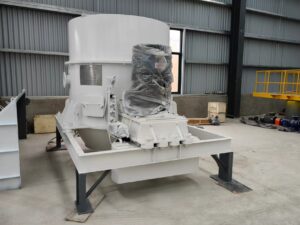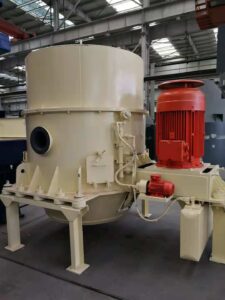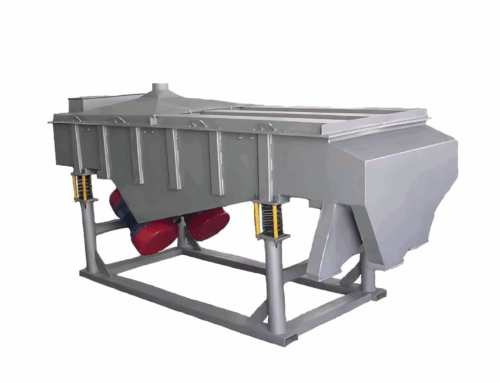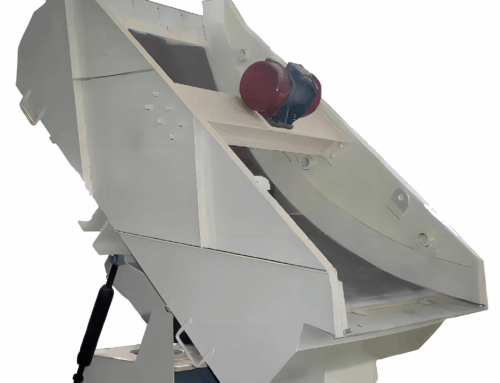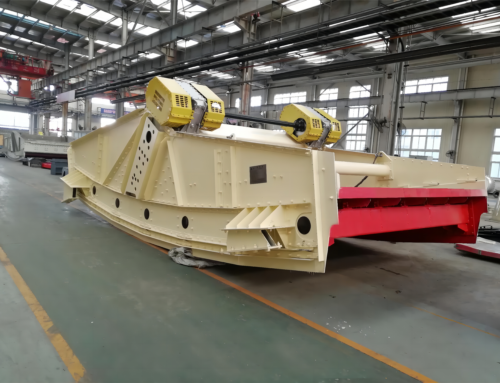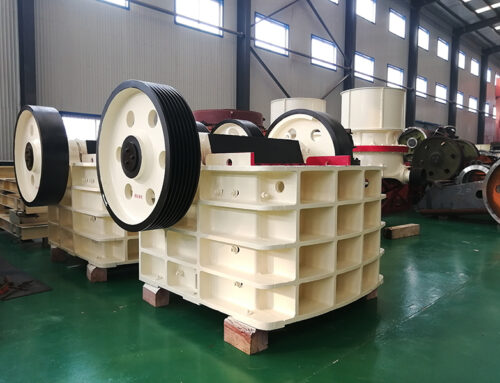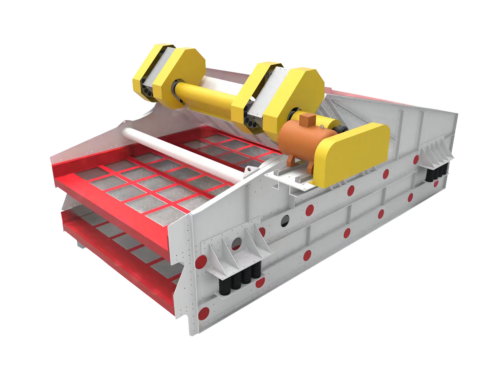Vertical Screw Discharge Centrifuge is used for dewatering of coal slurry and fine coal. It has a built-in differential speed mechanism, where the different speed ratios between the spiral scraper and the screen basket help in dewatering and discharging the product. This centrifuge is widely regarded as an effective equipment for coal dewatering. In the chemical industry, it separates mixtures accurately and helps product purification and raw material recovery; in the pharmaceutical field, it provides a pure material base for drug development and production and guarantees the quality of drugs; in the environmental protection business, it bears the heavy responsibility of waste water treatment and sludge dewatering. Vertical centrifuge using high-speed rotation generated by the powerful centrifugal force, based on the material density and particle size differences, the different components from the mixed system separated one by one, so that the chaos becomes orderly.
As the operating time increases, the components of the machine wear out and their performance deteriorates. Therefore, how to extend the service life of vertical centrifuges has become a key issue that many users need to solve.
一.Common failures of vertical centrifuges
Unable to start: when the start button is pressed, the centrifuge is unresponsive, which may be caused by a variety of reasons. The most common are power supply problems, such as loose power cords, poor plug contact, so that the current can not be properly delivered to the centrifuge; power switch failure, can not be connected to the circuit; fuse blown, which is usually due to overloaded circuits, short circuits and other abnormalities lead to excessive current, the fuse automatically cut off the circuit to protect the equipment.
Failure of the motor inside the centrifuge can also result in failure to start. The motor winding is short-circuited or disconnected, which destroys the normal electromagnetic induction of the motor and prevents it from running; the motor bearings are damaged, which increases the resistance of the motor rotation, and in severe cases, the motor will be jammed. In some old vertical centrifuges, due to long-term use, the motor carbon brushes are badly worn and cannot make good contact with the commutator, which will also cause the motor to fail to start.
Unstable rotational speed: unstable rotational speed will affect the separation effect, so that the purity of the separated substance is not up to standard. Unstable power supply voltage is a common reason. When the voltage of the power grid fluctuates greatly, the input voltage of the motor also changes, resulting in unstable motor speed. During some peak periods of electricity consumption, the voltage in the area where the plant is located may drop significantly, thus affecting the normal operation of the centrifuge.
Failure of the electronic control system should not be ignored. For example, the speed control module is damaged, unable to accurately control the speed of the motor; sensor failure, can not real-time monitoring of the centrifuge speed and feedback to the control system, resulting in the control system can not adjust the speed in a timely manner . In addition, the motor itself, such as rotor dynamic balance disorder, will produce vibration in high-speed rotation, which in turn affects the stability of the speed.
Excessive noise: the normal operation of the vertical centrifuge noise is relatively smooth and within the acceptable range, if there is abnormal noise, often means that the equipment has problems. Unbalanced load is one of the common reasons, when the distribution of materials in the drum is not uniform, the centrifuge will produce eccentricity in the rotation process, triggering severe vibration and noise. Just like a washing machine can make a lot of noise if the clothes are unevenly placed when spinning.
Worn bearings are also a major factor in excessive noise. After a long period of use, the balls or rollers of the bearings will wear out due to friction, and the gap will increase, causing the drum to wobble as it rotates, generating noise. In addition, loose connections inside the centrifuge, such as bolts and nuts, will collide with each other due to vibration during the operation of the equipment and make noise.
Excessive temperature: The temperature of the centrifuge will rise during operation, but if the temperature is too high and exceeds the normal working temperature range of the equipment, it will affect the performance and life of the equipment. Failure of the cooling system is one of the main causes of high temperature. For example, the cooling fan malfunctions and fails to operate properly, which cannot effectively distribute the heat generated by the motor and the drum; the cooling water pipeline is blocked, and the coolant cannot circulate and flow, resulting in poor heat dissipation.
Overload operation will also cause the centrifuge temperature to rise sharply. When the amount of material processed by the centrifuge exceeds its rated load, the motor needs to output more power to maintain operation, which will lead to an increase in motor current and generate more heat. In addition, the high ambient temperature will also affect the heat dissipation of the centrifuge, in the hot summer, if there is no good ventilation and cooling measures in the workshop, the temperature of the centrifuge is more likely to rise .
二.The key points of maintenance
1.Daily use norms
Pre-operation inspection: Before starting the vertical centrifuge, a comprehensive and detailed inspection of the equipment is to ensure its safe and stable operation of the foundation. First of all, the appearance of the equipment should be checked to see whether the shell is broken, deformation; check the control panel buttons, lights are normal, to ensure that the control components can accurately respond to the operating instructions.
Also carefully check the wiring connections to see whether the power cord has signs of damage and aging, and whether the connection between the plug and the socket is tight; and poor contact of the plug may lead to unstable power supply to the equipment, affecting normal operation. Check whether the connections between the components are firm, such as the connection between the drum and the spindle, the connection between the feed tube and the centrifuge. Any loose connection may cause faults when the equipment is running at high speed, such as parts falling off, material leakage and so on.
Correct operation process: the correct operation process is crucial to the stable operation and separation effect of the vertical centrifuge. When starting the centrifuge, the power should be turned on first to ensure that the equipment is in standby mode. Then, according to the nature of the material to be separated and the experimental requirements, set the centrifuge speed, time and other parameters reasonably. When setting the rotational speed, avoid exceeding the rated rotational speed of the centrifuge, so as not to cause damage to the equipment, but also to ensure the stability of the separation effect.
After setting the parameters, close the lid of the centrifuge and make sure that the lid is well sealed, which not only prevents the material from splashing out during centrifugation, but also ensures that the pressure inside the centrifuge chamber is stable and improves the separation efficiency. Press the start button to start the centrifuge, and during the startup process, closely observe the running status of the centrifuge to see if there is any abnormal vibration, noise and so on. If abnormalities are found, the centrifuge should be stopped immediately for inspection and troubleshooting.
During the operation of the centrifuge, the uniformity and stability of material addition should be maintained. For centrifuges with continuous feeding, control the feeding speed to avoid feeding too fast or too slow. Feeding too fast may lead to uneven distribution of materials in the drum, causing vibration of the centrifuge; feeding too slow will affect the production efficiency. For centrifuges with intermittent feeding, make sure that the material is evenly distributed in the drum each time the material is added, which can be achieved by adjusting the feeding position or using a specialised fabric device.
Precautions in operation: the loading of materials should be strictly controlled to avoid overload operation. Overloading operation will make the motor bear excessive load, resulting in motor heating and burning, but also accelerate the wear and tear of various parts of the equipment, shortening the service life of the equipment. When loading materials, the loading capacity should be reasonably calculated according to the rated capacity of the centrifuge and the density of the material to ensure that it does not exceed the carrying capacity of the equipment.
Attention should also be paid to avoid the centrifuge running in an unbalanced state. When the distribution of materials in the drum is not uniform, an unbalanced force will be generated, resulting in increased vibration of the centrifuge, which may cause the centrifuge to be displaced or even tipped in serious cases. When loading materials, make sure that the materials are evenly distributed in the drum, and for some centrifuge tubes or sample containers that need to be placed symmetrically, they should be placed in strict accordance with the requirements. If the centrifuge is found to vibrate abnormally during operation, the equipment should be stopped immediately, the distribution of materials should be checked, and the balance should be readjusted before starting again.
2.Maintenance of the host
Installation environmental requirements: vertical centrifuge should be installed on a solid, horizontal table, which is an important prerequisite to ensure stable operation of the equipment. Horizontal installation table can keep the centrifuge drum in a horizontal state, avoiding uneven distribution of materials in the drum due to tilting, thus affecting the separation effect and normal operation of the equipment.
Enough space should be reserved around the centrifuge, and sufficient space can also ensure good ventilation conditions, which is conducive to heat dissipation during the operation of the centrifuge, preventing the equipment from being damaged due to high temperature.
Power supply and line maintenance: stable power supply is the guarantee for the normal operation of vertical centrifuges, so use a power supply that meets the requirements of the equipment to ensure stable voltage and sufficient current. Excessive voltage fluctuations may cause the motor speed to be unstable, affecting the separation effect and even damaging the motor. Before using the centrifuge, the voltage of the power supply should be checked to see if it is within the range specified by the equipment, which can be measured using a voltmeter.
Body cleaning and maintenance: regular cleaning of the shell and centrifuge chamber of the vertical centrifuge can effectively prevent the accumulation of dust, corrosive substances, etc., and extend the service life of the equipment. When cleaning the shell, you can use a clean damp cloth to wipe and remove the dust and stains on the surface. For some stubborn stains, you can use a mild detergent to clean, but be careful to avoid the use of detergents containing corrosive ingredients, so as not to damage the surface coating of the shell.
Inspection of key components: Regularly checking the status of key components such as the motor, rotor seat, drive shaft, etc. is the key to ensuring the normal operation of the vertical centrifuge. When checking the motor, check whether the motor is running smoothly, with or without abnormal noise or vibration. This can be judged by listening to the sound and touching the motor shell. If the motor is found to have abnormal noise, it may be that the motor bearings are damaged or the internal parts are loose, which need to be repaired or replaced in time. Check whether the temperature of the motor is normal or not, too high temperature may indicate motor overload or poor heat dissipation, need to further check the cause.
When checking the rotor seat, see if it is solid and has no offset or deformation. The solidity of the rotor seat directly affects the operating condition of the rotor. If the rotor seat is offset or deformed, it will cause the rotor to generate an unbalanced force when rotating, which will aggravate the vibration and wear of the equipment. Tools such as a level can be used to check the level of the rotor seat to ensure that it is in a horizontal state.
3.Maintenance of rotor
Appearance and structure check: the rotor is one of the core components of the vertical centrifuge, and it is vital to check its appearance and structure regularly. Check the rotor surface for oxide layer flaking, corrosion, scratches, deformation or cracks. Oxide layer flaking may lead to rust on the rotor surface, affecting its performance and service life; corrosion will weaken the strength of the rotor, increasing safety risks; scratches, deformation or cracks may directly lead to rotor rupture during high-speed rotation, causing serious accidents.
Maintenance before and after use: Before using the rotor, pre-cooling treatment can reduce the thermal stress due to temperature changes and extend the service life of the rotor. Especially for the rotor of high-speed centrifuge, pre-cooling is especially important. The rotor can be put into a special pre-cooling device and pre-cooled according to the specified time and temperature.
After use, the rotor should be cleaned in time to remove the residual materials and impurities on the surface. It can be rinsed with water and then dried with a clean towel. If the material is corrosive, it should be cleaned with the appropriate neutralising agent to prevent corrosion of the rotor. After cleaning, air dry the rotor to avoid moisture residue leading to rust.
If the rotor is not used for a long time, it should be stored properly. A layer of paraffin can be applied to the rotor surface to prevent oxidation and corrosion. Store the rotor in a dry, ventilated environment to avoid moisture and exposure to other factors.
Vertical centrifuge as an indispensable key equipment in many fields, its stable operation and long life is directly related to the production efficiency, product quality and the output of scientific research results. Standard operation in daily use is the foundation, from the rigorous inspection before operation, to the correct operation process, to the strict precautions in operation, each link should not be ignored. Maintenance of the mainframe covers many aspects such as installation environment, power line, body cleaning and key parts inspection, which provides a solid guarantee for the stable operation of the centrifuge. The rotor as the core component, its appearance and structure inspection, maintenance before and after use, prevention of collision and damage, as well as the correct selection and use of centrifuge tubes, are all crucial to the performance and safety of the equipment.


